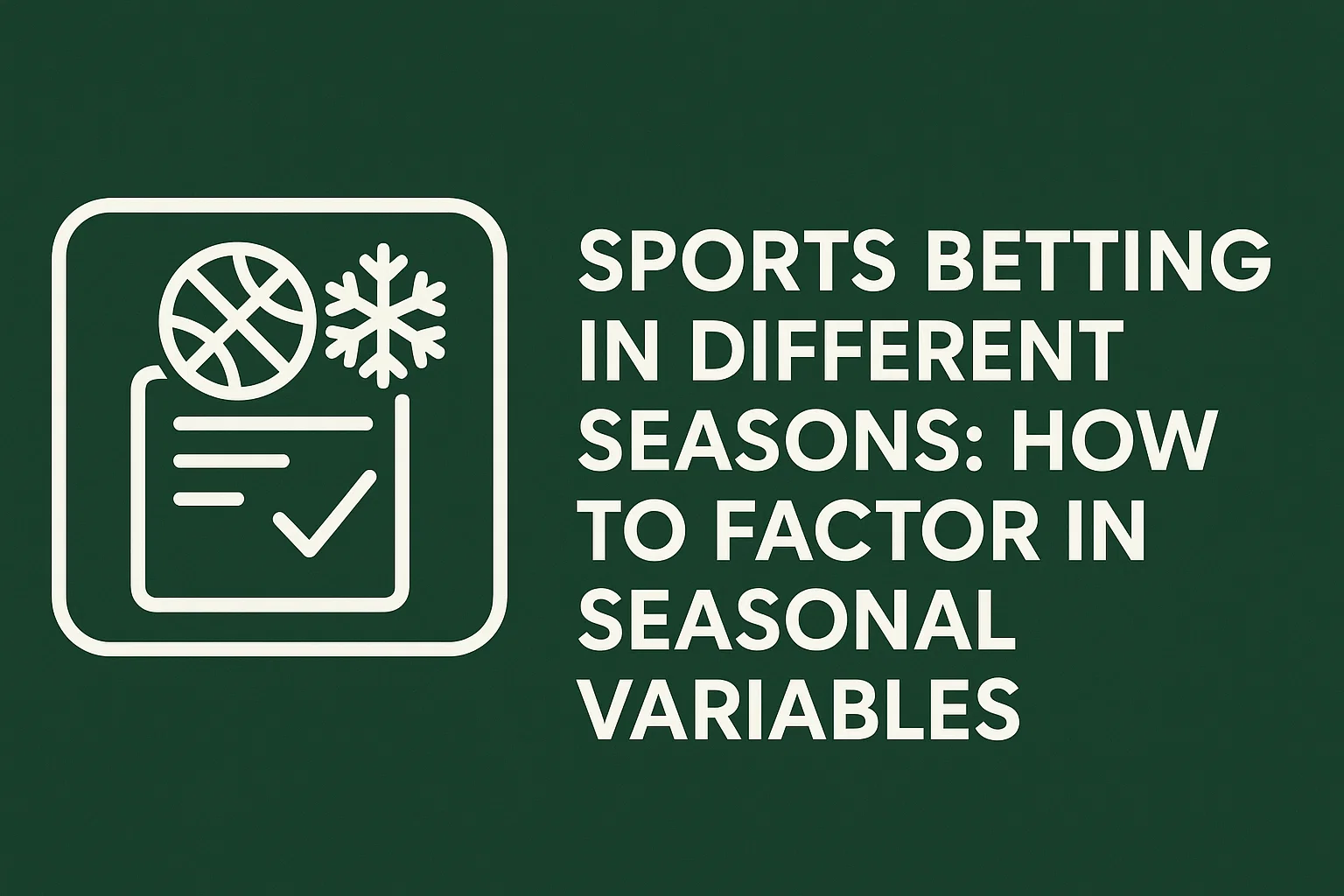How to Win at Blackjack: 5 Things You Must Know

Seasonal shifts change how games are played — and how you should bet. Sports betting is an engaging way to test your read on teams, tactics, and momentum, but even sharp analysis can miss if you ignore the calendar. Weather, scheduling rhythms, roster moves, and player conditioning all swing with the seasons. Different times of year tilt match dynamics, and savvy bettors price those tilts in. Many U.S. bettors also map their strategies to how markets behave on platforms like Fox Bet online betting, building angles that track with the time of year.
Summer — Heat, Rest, and Injuries
The heat changes everything. Summer in the U.S. brings warm, humid conditions and more outdoor play, which drains stamina, slows late-game pace, and raises soft-tissue injury risk. In soccer, preseason loads and friendlies can make form tricky to read — the matches matter less, the lineups rotate more, and the intensity is inconsistent. Treat friendly results as noisy signals.
Before you place summer bets, quickly check:
- Heat & humidity forecast (fatigue and cramping spike late).
- Travel + short turnarounds (summer tours and preseason camps).
- Injury reports for key starters (preseason knocks linger).
- Match type (friendlies vs. official games are priced very differently).
Key takeaway: Price in the elements and the looseness of preseason play — and be slower to trust surface-level “hot streaks” built in friendlies.
Fall — Back to Routine
Autumn reintroduces structure and sharper competition. The NFL, NBA, NHL, and college football kick into full gear, moving teams from exhibition form to high-leverage regular-season intensity. Units that looked great against light preseason opposition often normalize once travel, scouting, and real game-planning arrive. It’s also the season when rookies and fringe players get real minutes — a blend of upside and volatility.
What to weigh most in fall:
- Early efficiency over raw totals (pace and opponent quality vary).
- Snap counts/rotation patterns (who actually earned trust).
- Bye weeks and travel across time zones (subtle but real).
- Rookie usage vs. mistake rate (energy helps; inexperience costs).
Key takeaway: Trust stable roles and sustainable efficiency, not September noise.
Winter — Weather, Edges, and Adjustments
Cold, wind, and snow reshape game plans. Outdoor football in the U.S. during winter can pivot to run-heavy scripts, shorter passes, and slower tempos, while kicking accuracy and deep balls suffer in wind. Field conditions (frozen turf, sleet) can turn skill edges into trench battles. In basketball and hockey, dense schedules and back-to-backs amplify fatigue and reward depth.
Transactionally, winter tends to bring targeted moves rather than overhauls; mid-season chemistry is fragile, so teams prefer tweaks. When a star goes down, the market may overreact or underreact depending on bench fit and coaching adaptability.
Key takeaway: Weather and schedule density are real handicapping variables — price totals, pace, and kicker/QB profiles accordingly.
Spring — Playoffs and Decision Time
Spring is when motivation spikes and margins shrink. From March Madness to the NBA and NHL playoffs, rotations tighten, matchups get solved game-to-game, and coaching threads through every possession. Teams near the bottom may flip coaches to salvage a season; sometimes that new-voice bounce is real, sometimes it’s just noise.
Finals and conference championships supercharge incentives. Stars play heavier minutes, role players get sharper assignments, and home-court/ice edges can swing a series when travel piles up.
Key takeaway: Lean into matchup specifics and coaching adjustments; playoff basketball/hockey is a chess match, not a vibe check.
Why Seasonal Factors Matter in Betting
It’s not just the weather. Seasonal context rewires player psychology, conditioning, rotation choices, and tactical risk-taking. News cadence changes too: preseason optimism, mid-season realities, and late-season urgency each have distinct signals.
How to operationalize it:
- Build a seasonal checklist (weather → pace/total, schedule → fatigue, roster → continuity, stakes → motivation).
- Use historical splits carefully (winter road games in harsh climates, altitude spots, indoor vs. outdoor).
- Contextualize “form.” A team cruising through friendlies or soft early schedules may regress once the calendar hardens.
- Profile player pools. Groups acclimated to warm climates can underperform in severe cold road games, especially where footing and wind reshape the skill balance.
- Stay disciplined on news. Injury reports, minutes limits, travel, and role changes matter more when the season’s demands spike.
Key takeaway: Seasonal filters clarify which stats travel and which ones evaporate when the calendar flips.
Conclusion
Seasonal factors are edges hiding in plain sight. The time of year shifts fitness, psychology, tactics, and market behavior, and the bettors who price those shifts gain a durable advantage. Use weather, schedule density, motivation, and roster continuity to guide totals, sides, and props — and be honest about uncertainty. Even the sharpest preparation can’t guarantee outcomes, but season-aware handicapping keeps you on the right side of probability more often than not.
